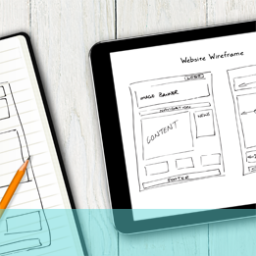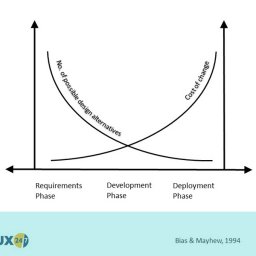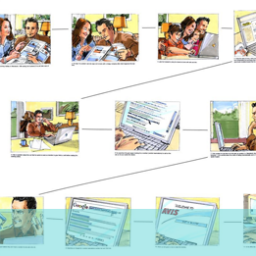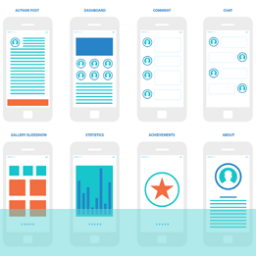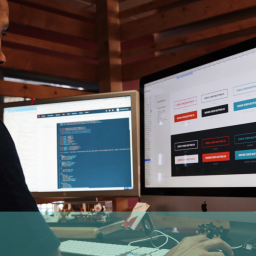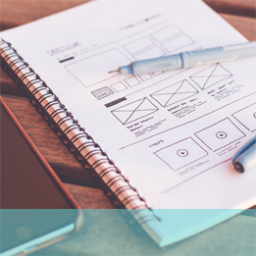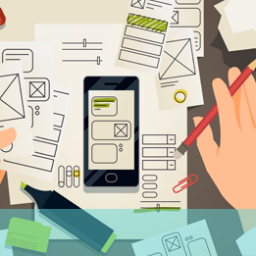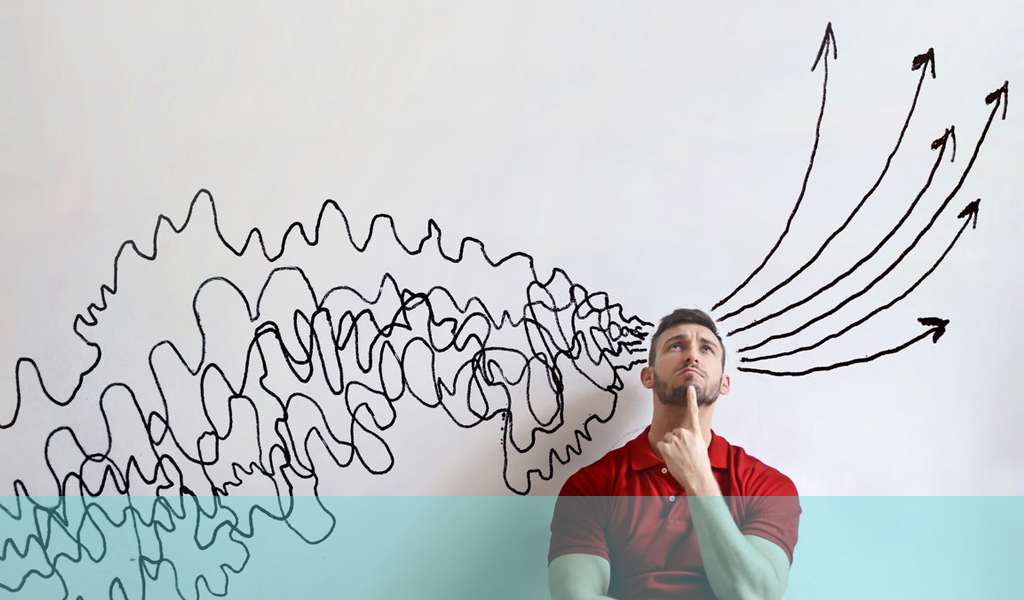
A lot of talk about UX investment rotates around hard figures and how much an organization can expect to make from their spend. Investors and shareholders love to see that often bandied around the statement that ‘for every $1 spent, you’ll get $10/$20/$100/$1000 return.’
Of course, seeing that return in hard and fast figures is enough to whet the appetites and assure them that their investment offers advantageous monetary value. However, when it comes to the ROI of UX design, today we’re going to focus more on the ‘value’ than the ‘monetary.’
Recognizing the business value of UX design
It’s safe to say that the business goals of almost all organizations include the all-important bottom line—how much profit they can make. However, in UX design—debating value to the user as well as how much profit we can achieve—we are interested and invested in the bottom line but more so in how we get there.
A poorly designed product leads to the following issues, and they all directly impact the bottom line investors and stakeholders are so invested in.
- Disappointed customers – Customer loyalty plays a huge part in UX and its returns. Unhappy customers, whether with product, process, or application, will soon find an alternative they’re happier to spend with. Usability tests narrow down key problem areas, resulting in increased customer satisfaction.
- Lower sales figures – Poor engagement, adoption, and retention all lead to fewer conversions and reduced sales.
- Wasted time – Although many shareholders want to skip the UX design process to save time and money, the opposite has proven to be true—time spent evaluating customer experience and user satisfaction pays off in dividends. Exploring what makes the best solution for your users and customers saves far more time in production than it costs in UX design time. As well as saving time and costs in production, user research and usability testing save time and additional costs in customer service requests and having to correct those errors you didn’t spot when things go awry after you launch your product.
- Affects brand perception and reputation – User satisfaction is paramount, given nobody is impressed with a poorly performing product, and its impact on an organization’s brand perception is huge. Someone will always be ready to step into your shoes, however good your idea is, and your customers will go where their best experience lies.
- Reduces loyalty and motivation of your employees – Our final note on the value of good UX design isn’t directly related to your users but to your staff and teams. Just as brand perception affects your users and customers, it also has a knock-on effect on your employees. Customer service operatives will tire of pushing a weak product, demotivating them, and will often seek employment with a better-performing, happier brand.
Those are just a few of the most obvious ways failing to invest in UX design will add to a poorly performing operation.
While it might be tricky to pinpoint a figure in monetary value for those assets (without running two identical businesses side by side), by comparing similar businesses and their operational investments (or lack of) into UX design in recent history, it’s proven time and time again that the ROI of UX design is more than worth its initial stake.
Curry’s – one example of a major retail outlet proving ROI of UX is essential
Keeping our eye on everything and anything UX, we found a great piece on marketingweek.com where Curry’s—the electronics retail chain—discussed how it explored its marketing and promotional activity to improve its ROI. Using their research, essential insights, and smart design thinking to make significant changes, its yearly digital media spend was reduced in areas where it wasn’t effective, and despite sales taking a 7% drop, yearly earnings were up 45%.
How? By improving its data and analytics capabilities and tracking business metrics, they monitored the ROI on various practices and where the most vital returns were made. That kind of understanding allows any business to invest more where it works and less where it doesn’t.
They explained that it wasn’t simply a case of cutting marketing but reducing or removing the advertising and sales promotions that didn’t provide a good return or any kind of customer value. In many cases, their decision to stop chasing unprofitable sales added value to their service, translating into improved UX and value for their customers. It’s also boosted their net promoter score by 280 basis points over the past three years.
“As you improve the experience you give to customers, so you can charge more for it, and the customer will bear that because they’re still getting value for money.” Curry’s CEO, Alex Baldock.
Next, we’ll look at how investment in UX research creates a model that boosts their financial returns.

Benefits of investing in UX
Translating the negatives of failing to invest in UX design and research results in the following positives:
- Increased conversion rates – Enhancing each element of your conversion process results in more transactions, translating into more revenue.
- Improved customer retention and loyalty – Strong customer loyalty encourages repeat sales and recommendations.
- Savings from reduced development time and costs – Lower development costs and a reduction in further development and maintenance costs.
- Savings from other investment reductions – Not only will shareholders benefit from reduced development costs but also those associated with customer support services. They’ll save money from having far fewer customer support interactions and also the acquisition and training of replacement staff, where their morale and brand loyalty is in significant decline.
- Reducing the risk of delivering poor products, solutions, and systems – So many elements affect your user experience level. From the ease of operation, learning, completing tasks, making payments, satisfaction, and more; they all add up to whether your UX will help boost your brand and ROI or damage it.
All these elements affect ROI and benefit your bottom line. The benefits of UX research to your business ROI should be crucial to a brand that wants to make a real difference in its operations.
Calculating ROI of UX
A simple formula to calculate ROI of UX looks like this:
(Net Income / Investment Cost) x 100
or
((Income – Total Investment) / Total Investment) x 100
When you look at the overall investment to take your product to market—employing sales and marketing staff, development teams, graphic designers, accountants, rent, equipment, energy, etc., you’ll see that your investment in UX research and UX designers plays a relatively small part in the bigger financial picture, yet is responsible for so many improvements to your development process, cost savings, and that all-important customer satisfaction in both online and offline environments.
Is there an opportunity to explore what a UX designer can bring to the table to better estimate your ROI calculations throughout the entire product development lifecycle?
When discussing ROI, two or three points come up repeatedly
The first is that ROI is all about money; the second, the maths has to be perfect; and third, it has to cater to every tiny detail and point in the process.
Some organizations’ results won’t have a financial metric to consider at all. The value to the user could be lifestyle improvement, community development, advanced safety, better health, or some other benefit you can’t put a price tag on.
When it has got a financial impact, we suggest not getting hung up on those expectations; if you think you’re going to see a range of ultra-accurate figures and accounts that guarantee the success of your studies and carefully crafted UX updates, you’re not going to get them.
Instead, we recommend that calculating ROI of UX paints a picture of what’s possible, probably, and credible. It’s an estimation, not an out-and-out prediction. You’ll be able to calculate a much more detailed figure of your ROI after you’ve carried out your UX research and put it into action, but that’s not what investors want to hear. They want the reasons to spend that money in the first place.
For that, as we said, you need to look at previous data or market research for any UX business case that invested in product development or a UX redesign and how much more successful they’ve been than those that didn’t.
If you’d like some examples to show the true value of investing in user research, we’re happy to share some of our experience working with organizations in your industry (or similar) to provide you with some of the numbers you could hope to achieve.
Summary
Unless your company is developing a working crystal ball, you won’t yet have access to the figures A/B testing will deliver.
Instead, to develop a competitive edge over our competitors, we have to pay attention to the practices of those that have traveled this road before us, how their investments in UX research have paid off in dividends, and that if you’re looking to make the best product possible and the fewest mistakes in the process, UX design has to play an essential part in your decision-making process.
If you would like to know more about the ROI from UX Design, email us at hello@ux247.com.




